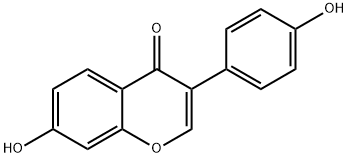Daidzein - Application, Pharmacokinetics, Synthesis, Safety etc.
Daidzein (7-hydroxy-3-(4-hydroxyphenyl)-4Hchromen-4-one) is produced in plants through the phenyl propanoid pathway and exerts defense responses to several pathogenic attacks in plants. It belongs to a class of compounds known as isoflavonoid containing benzene ring connected to a chromone moiety.It is also classified as phytoestrogen because of its structural and functional similarities with endogenous estrogen. In plants, daidzein exists in conjugation mainly with glucose, but other than glucose they may also conjugate with 600-O-malonyl or 600-O-acetylglucose. Daidzein can be metabolized to form several derivatives, including O-desmethylangolensin (O-DMA,20, 40,400-trihydroxy-α-methyl deoxybenzoin), DHD (40,7-dihydroxyisoflavanone), and cis-4-OH-equol (407-dihydrox-yisoflavan-4-ol). These are formed mainly by the process of demethylation and reduction by intestinal bacteria.Among naturally occurring isoflavones, soy isoflavones are an important class with various biological activities.
Due to their phytoestrogenic structure, their effects on the brain are profound thus making the neurobiological effects of these compounds an active area of research. One such compound is daidzein, which has been reported to affect various neurobiological regulatory mechanisms such as behavior, cognition, growth, development and reproduction. These effects are mainly elicited through the interaction of daidzein with different signaling molecules and receptors, thereby offering neuroprotection. In addition, daidzein has also been reported to possess activities against various neuropathological conditions mainly by its interaction with the cerebrovascular system. It focuses on providing a comprehensive account on the bioavailability and metabolism of daidzein in vivo, and discusses its activities and mechanisms of action in detail, in both physiological and pathological conditions. In addition, the effects of daidzein on other disorders have also been examined. [1]

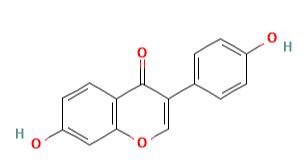
Figure 1 the molecular formula of Daidzein
Application and pharmacokinetics
Emerging evidences from epidemio-logical studies have shown the association between higher intake of soy isoflavones and reduced risk of T2D and its associated health risks. Daidzein, a soy isoflavone, has been found to have a promising therapeutic potential in managing T2D pathophysiology. Fermented soybean is the major source of daidzein; however, it can also be formed via the consumption of its glycosylated moiety, daidzin with subsequent hydrolysis by intestinal bacterial enzyme. Many studies reported the prophylactic effect of daidzein on the improvement of hyperglycemia, insulin resistance, dislipidemia, obesity, inflammation, and other complications associated with T2D. The molecular mechanisms underlying the action of daidzein include diverged path-ways where daidzein has been shown to interact with several signaling molecules and receptors to achieve desirable effect.Although the specific molecular mechanism is still elusive.
Daidzin is present predominantly in the form of glucosides in various plants, including red clover (Trifolium pratense), alfalfa (Medicago sativa), soybean (Glycine max), and some legumes (Leguminosae). Among them soybean and soybean products are considered as the most abundant source of daidzein Soybean contains approximately 0.1–5mg of total isoflavones pergram; however the amount varies depending upon types of soybean, area wise distribution, and harvesting year. In fermented soybean, the amount of daidzen is higher than those seen in nonfermented soybean because fermentation increases the level of active aglycone form. Various microorganisms including Bacillus sp., Rhizopus sp., and Aspergillus sp. have been reported to involve in the aglycosylation of isoflavone during fermentation process. Besides soy products, daidzein can also be found in a large amount in many nutritional supplements, body building beverages, sports drinks, different infant formulas,etc. The presence of daidzein (both glycoside and aglycone forms) has also been reported in kudzu root (Pueraria radix), a popular traditional Chinese medicine commonly used as dietary supplements.[1]

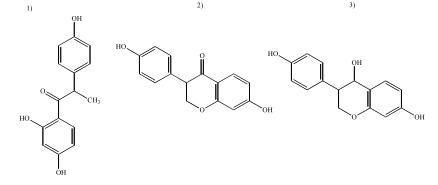
Figure 2 Metabolites of daidzein: 1) O-desmethylangolensin (O-DMA, 2′,4′,4″-trihydroxy-α-methyldeoxybenzoin), 2)
dihydrodaidzein (4′,7-dihydroxyisoflavanone) and 3) cis-4-OH-equol (4′,7-dihydroxyisoflavan-4-ol).
Synthesis
Daidzein (7,4’-dihydroxyisoflavone) structurally belongs to the isoflavone class of flavonoids. This nonsteroidal compound is also classified as a phytoestrogen with a structure and function similar to human estrogens. Structurally sharing the benzene ring connected to a chromone or 4-chromanone. The isoflavonoids, such as genistein and daidzein, are a subclass of the flavonoid family, containing ring A fused to ring C, which is connected to ring B through carbon 3. A significant feature of the chemical structure of daidzein is the presence of a phenolic ring, a condition for binding to the estrogen receptor. Isoflavones O-glycosides, daidzin (7-O-glucoside), 6’’-O-acetyldaidzein, 6’’-O-malonyldaidzin mainly occur in soybeans or soy products.Their metabolism results in the release of a sugar molecule, leaving an isoflavone aglycone called daidzein. Daidzein-8-C-glucoside is known as puerarin drinks, body building beverages and energy bars.[2]
Toxicological and Safety
Daidzein is the major circulating isoflavone found in those human beings who use high soy diet. Daidzein is known to posses various useful activities, such as, it is found as anti-cancer in prostate, chest and large intestine cancers and it has cardioprotective, anti-inflammatory and antioxidant proper-ties. Previous studies have reported neuroprotective effects of daidzein, although the exact mechanism is yet to be fully elucidated. In vitro, daidzein protects primary neurons from β-amyloid induced toxicity and from thapsigargin-induced apoptosis. It has been shown that daidzein is neuroprotective against glutamate induced excitotoxicity and oxygen–glucose deprivation induced neurotoxicity in neural cells.In summary, to the best of our knowledge, the article reported for the first time the inhibitory effect of regular exercise combined with daidzein on tumor growth. In addition, we demonstrated that regular exercise with daidzein synergistically regulates the distribution of NK cells by epinephrine and IL-6, and ultimately exerts anti-tumor effects in breast cancer cells through Fas/FasL-mediated apoptosis pathway (Fig. 3). Therefore, combination of regular exercise with daidzein may further develop into a candidate method for the prevention and treatment of cancer, especially breast cancer.[3] Further researches indicated that the combination of exercise and daidzein synergistically mobilized and redistributed natural killer cells through upregulating the level of epinephrine and interleukin-6. Moreover, exercise combined with daidzein induces apoptosis in cancer cells via Fas/FasL-initiated mitochondrial apoptosis signaling pathway. These results suggested that regular exercise combined with daidzein may explore a candidate way to prevent and treat the breast cancer.

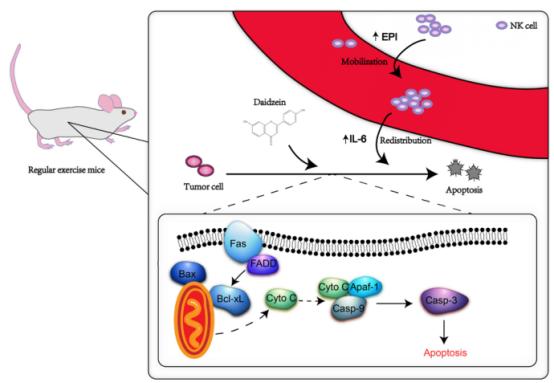
Figure 3 Molecular mechanism of regular exercise and daidzein synergistic inhibition of tumor growth in orthotopically transplanted 4T1 breast cancer mice.
Handling and storage
Avoid dust generation. Avoid breathing vapors, aerosols or gases.
References
1
2Das D., Sarkar S. & Bordoloi J. et al., "Daidzein, its effects on impaired glucose and lipid metabolism and vascular inflammation associated with type 2 diabetes," BioFactors, Vol.44, No.5(2018), pp.407-417.
3
);You may like
See also
Lastest Price from Daidzein manufacturers
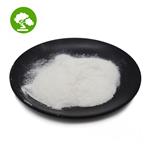
US $0.00-0.00/KG2024-04-12
- CAS:
- 486-66-8
- Min. Order:
- 1KG
- Purity:
- 98%
- Supply Ability:
- 160mt/ Month
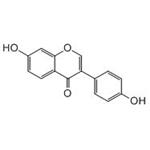
US $0.00-0.00/kg2024-04-07
- CAS:
- 486-66-8
- Min. Order:
- 0.10000000149011612kg
- Purity:
- ≥98%HPLC
- Supply Ability:
- 20tons
